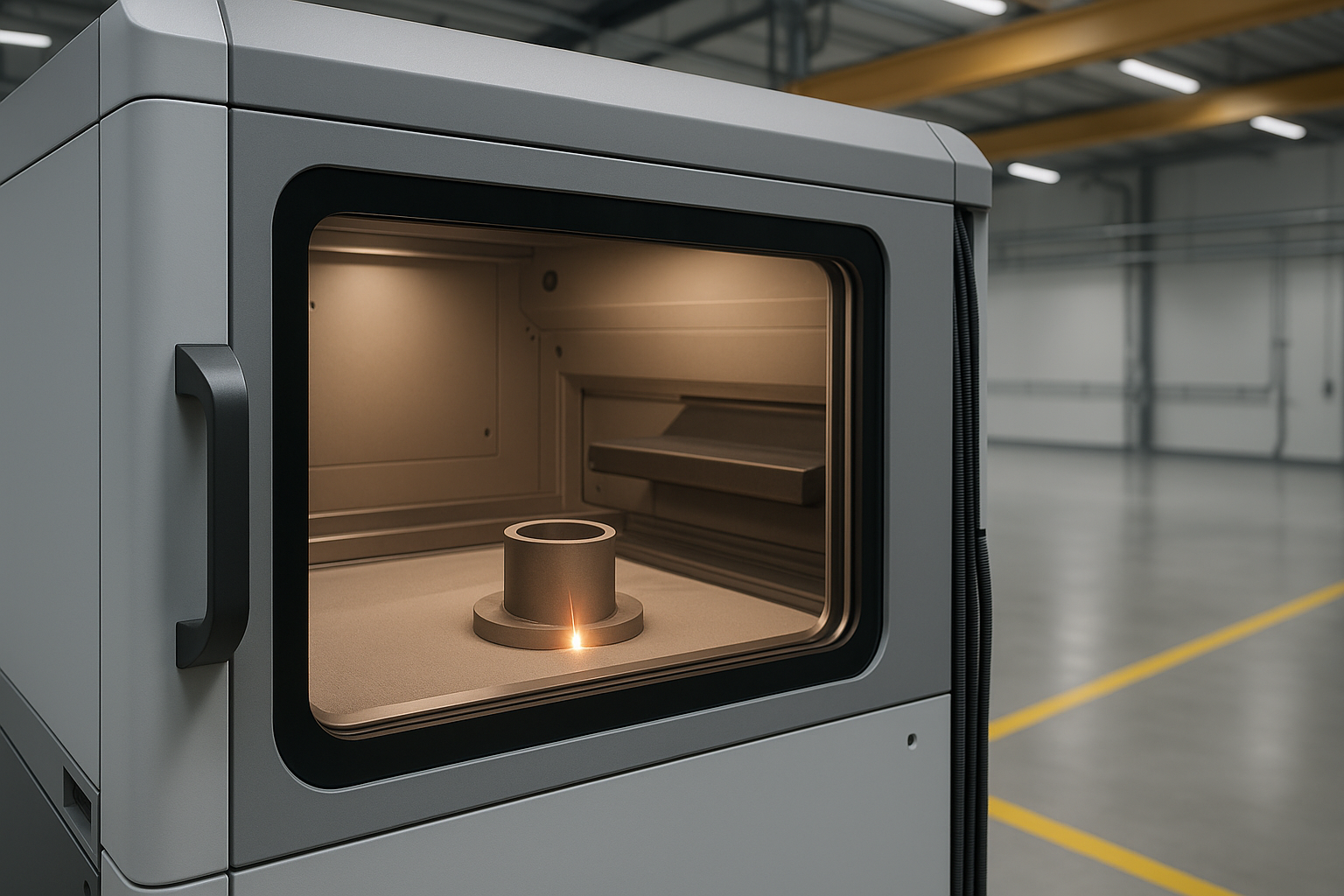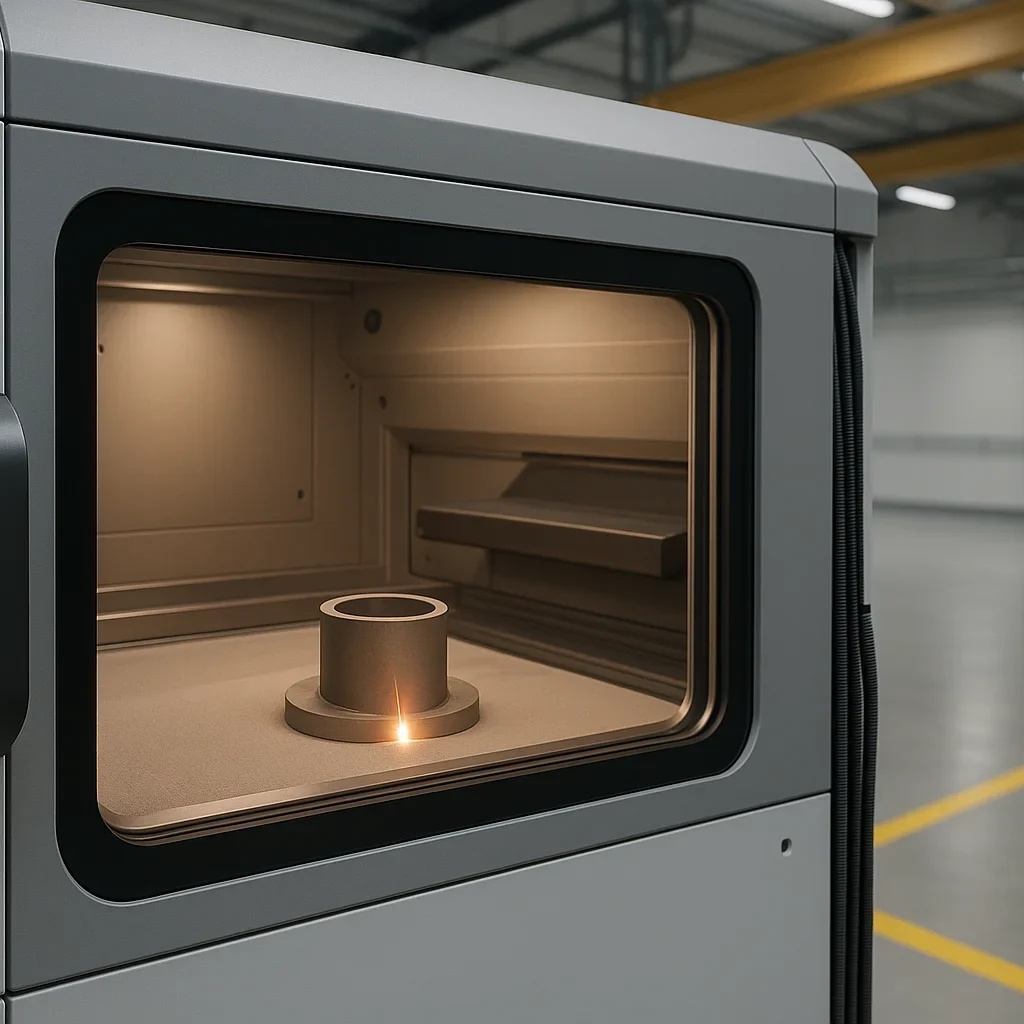

Next-Generation Additive Manufacturing Services
NEXAMS Powering Innovation Through Sustainable and Digitally Integrated Additive Manufacturing Solutions
Additive manufacturing (AM), widely known as 3D printing, is redefining product development with unmatched speed, flexibility, and sustainability, and we approach every program with a practical, ethical mindset that balances feasibility with empathy for your real-world constraints; by coordinating with trusted Vendors and aligning to local compliance needs, we create a clear path from concept to production while keeping decisions transparent and human-centered.
At NEXAMS, we deliver intelligent additive manufacturing solutions that integrate design, simulation, and production into a seamless digital thread, working shoulder to shoulder with experienced Manufacturers so your team can make confident, data-driven choices; our next-generation 3D printing services enable rapid production of lightweight, high-strength parts while minimizing waste and reducing environmental impact—right where it matters, often from facilities nearby when lead time and responsiveness truly count.
We support agile product development through real-time collaboration, cloud-based design interfaces, and scalable production capabilities, and we provide proactive Support that feels personal and accountable so your engineers can iterate quickly without sacrificing ethics, quality, or traceability; from early-stage prototyping to production-ready parts, NEXAMS ensures repeatable quality and accelerated market entry using a smart factory ecosystem.
With a focus on eco-efficient solutions, digital integration, and material innovation, our team helps clients unlock the full potential of additive manufacturing in today’s fast-paced industrial landscape, partnering with reliable Suppliers who share our commitment to responsible sourcing and transparent decision-making so your project flows smoothly from RFQ to delivery.
Key Advantages of Additive Manufacturing
Accelerated product development through rapid prototyping, guided by clear criteria that a discerning Supplier would expect for repeatability and compliance.
Sustainable production with minimal material waste.
Design freedom enabled by lattice structures and internal channels.
Digital factory workflows reducing manual errors and delays.
Scalable production from one-off parts to full runs.
Eco-friendly additive manufacturing with biodegradable and recycled materials.
High precision for functional, production-grade components.
Integration with CAD/CAM software for end-to-end traceability.
Custom part design with parametric and generative modeling.
Seamless iteration cycles for continuous product refinement.
Industries and Practical Use Cases
Aerospace: Flight-ready parts with topology optimization for reduced weight and increased strength.
Medical: Biocompatible surgical instruments and orthopedic implants tailored to patient-specific anatomy.
Automotive: Lightweight brackets, housings, and interior parts using sustainable materials.
Consumer Electronics: Compact enclosures and custom accessories designed for low-volume manufacturing.
Energy: High-performance turbine and pump components made from metal powders.
Robotics: Modular actuator housings and sensor mounts printed on demand.
Marine: Corrosion-resistant polymer parts for underwater applications.
Advanced Materials for Additive Production
High-Performance Polymers: PA12, TPU, PEEK for strength and heat resistance.
Metal Powders: Inconel, aluminum, and tool steel for functional metal components.
Flexible Materials: Thermoplastic elastomers (TPE) for wearable and dynamic parts.
Bio-Materials: PLA blends, biodegradable filaments for green manufacturing.
Ceramics: Zirconia and silicon carbide for high-temperature applications.
Conductive Polymers: For printed sensors and embedded electronics.
Recycled Composites: Repurposed materials for circular economy initiatives.
Cost Estimation and Pricing Strategy
At NEXAMS, pricing for additive manufacturing is tailored to your design needs, material selection, and production scale; by leveraging digital workflows and on-demand printing, we reduce inventory costs and eliminate traditional tooling expenses, with clarity that responsible Suppliers appreciate when budgets and timelines must be balanced.
Our flexible cost models accommodate prototyping, bridge manufacturing, and full-scale production; smart slicing algorithms and simulation-driven pre-build analysis ensure material optimization and accurate pricing, helping teams make ethical, well-reasoned decisions without surprises.
Sustainability is built into our pricing logic—choosing recycled or bio-based materials can reduce both cost and environmental footprint; transparent pricing reports are provided with every quote, ensuring complete clarity for stakeholders across procurement, engineering, and operations.
Complementary and Alternative Methods
Injection Molding: Cost-effective for mass production after prototype validation.
Precision Casting: Suited for legacy part replacement with complex geometries.
CNC Machining: Ideal for tight-tolerance parts and post-processing of printed components.
Vacuum Casting: For short-run, elastomeric prototypes.
3D Scanning + Reverse Engineering: Perfect for legacy redesign and digital replication.
Blow Molding: Used for hollow plastic components like bottles and containers.
Tool-Free Forming: Accelerates the creation of soft tooling for hybrid workflows.
FAQs
Q: What is additive manufacturing?
A: Additive manufacturing, also known as d printing, is a layer-by-layer production process that creates three-dimensional objects directly from digital models, offering greater design freedom and reduced material wastage while keeping decisions traceable and user-centric.
Q: How is metal printing different from traditional metal fabrication?
A: Metal printing in additive manufacturing involves metal deposition techniques to build parts layer by layer, enabling complex geometries and reducing the need for molds, unlike traditional subtractive or casting methods; the approach supports ethical material use and clearer quality checkpoints.
Q: What materials can be used in NEXAMS’ additive manufacturing processes?
A: NEXAMS uses polymers, composites, ceramics, and metal powders such as stainless steel, titanium, and aluminum in its additive manufacturing and metal printing services, selected in collaboration with qualified Supplier networks when regulatory or application constraints apply.
Q: How does direct digital manufacturing benefit production efficiency?
A: Direct digital manufacturing streamlines the production workflow by eliminating the need for tooling and intermediate steps, enabling on-demand production with rapid turnaround times and clearer decision-making gates for quality, cost, and lead-time.
Q: What industries benefit from additive manufacturing prototyping services?
A: Industries such as aerospace, automotive, medical, consumer electronics, and defense utilize NEXAMS’ additive manufacturing prototyping services for rapid design iterations and functional testing, with processes aligned to ethical standards and practical risk management.
Q: What is additive engineering, and how does it optimize product design?
A: Additive engineering involves optimizing designs for additive manufacturing by enhancing structural strength, reducing weight, and consolidating multiple parts into single components, which makes validation easier for audits and cross-functional reviews.
Q: Can NEXAMS provide large-scale production using additive manufacturing?
A: Yes, NEXAMS employs advanced printing services and scalable direct digital manufacturing techniques to efficiently handle both small-batch and large-volume production orders, coordinating with capable Suppliers to ensure continuity.
Q: How does NEXAMS ensure the quality of metal deposition processes?
A: Our metal deposition methods are governed by stringent quality control protocols, including layer-by-layer inspection, to ensure dimensional accuracy and material integrity, supported by clear documentation and open communication.
Q: What are the cost advantages of using additive manufacturing?
A: Additive manufacturing reduces material waste, eliminates tooling costs, and accelerates time-to-market, making it a cost-effective solution for both prototyping and end-use parts while maintaining transparency for procurement and finance teams.
Q: Why choose NEXAMS for additive manufacturing services?
A: NEXAMS combines expertise in additive engineering, advanced metal printing, and direct digital manufacturing to deliver high-quality, customized components with efficient production workflows, collaborating with dependable Vendors and Suppliers to keep programs predictable and ethical.
Q: What are the countries where NEXAMS offers its Additive Manufacturing services?
A: Asia: India, Japan, South Korea, Indonesia, Vietnam, Thailand, Malaysia, Taiwan, Singapore, Philippines, Bangladesh
Europe: Germany, United Kingdom, France, Italy, Netherlands, Spain, Poland, Belgium, Switzerland, Sweden, Austria, Czech Republic
South America: Brazil, Argentina, Chile, Colombia, Peru
Middle East: Saudi Arabia, United Arab Emirates, Turkey, Israel, Qatar, Kuwait
Africa: South Africa, Nigeria, Egypt, Morocco, Kenya, Ethiopia
Oceania: Australia, New Zealand
North America: United States, Mexico, Canada
A: By Sea: Asia: 15–20 days, Europe: 25–35 days, North America: 30–40 days, South America: 35–45 days, Middle East: 14–18 days, Africa: 20–28 days, Oceania: 22–30 days
By Air: Asia: 1–3 days, Europe: 3–5 days, North America: 4–6 days, South America: 5–7 days, Middle East: 1–2 days, Africa: 3–5 days, Oceania: 4–6 days
